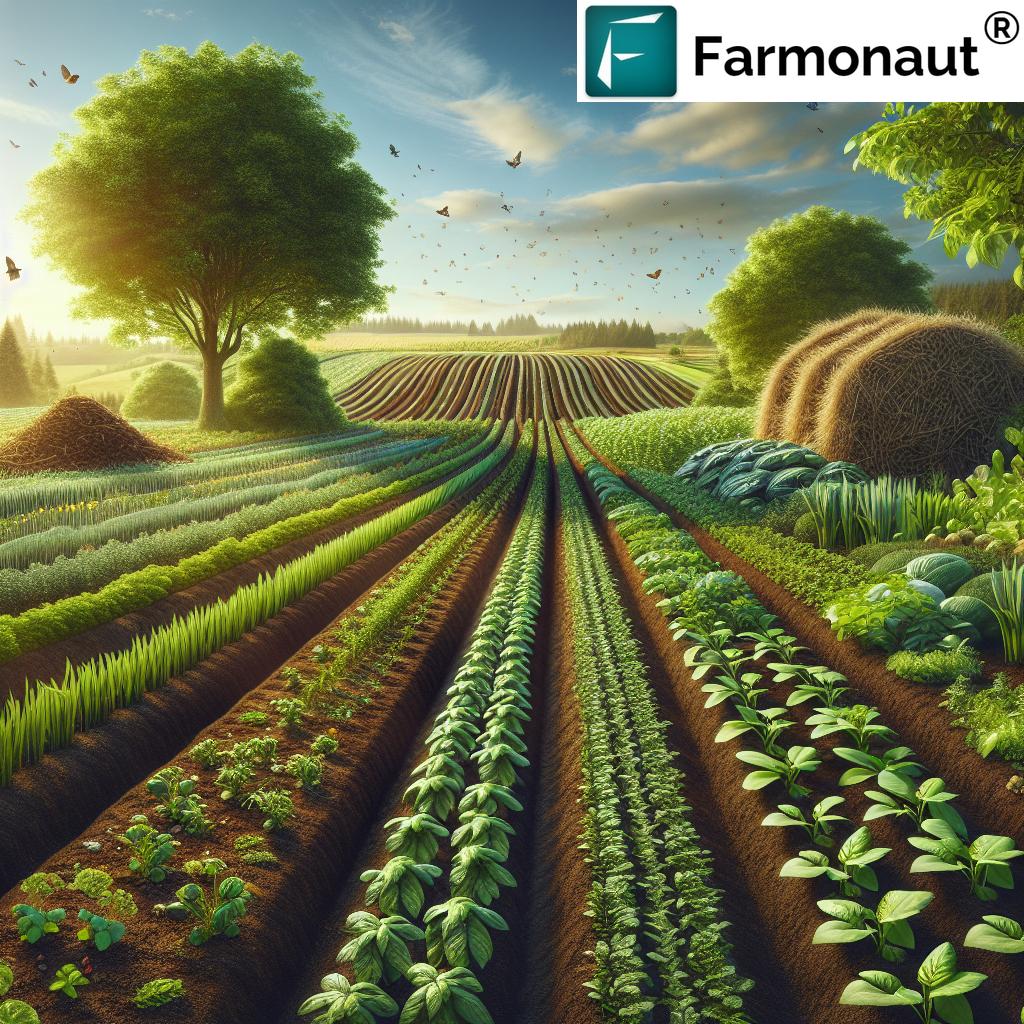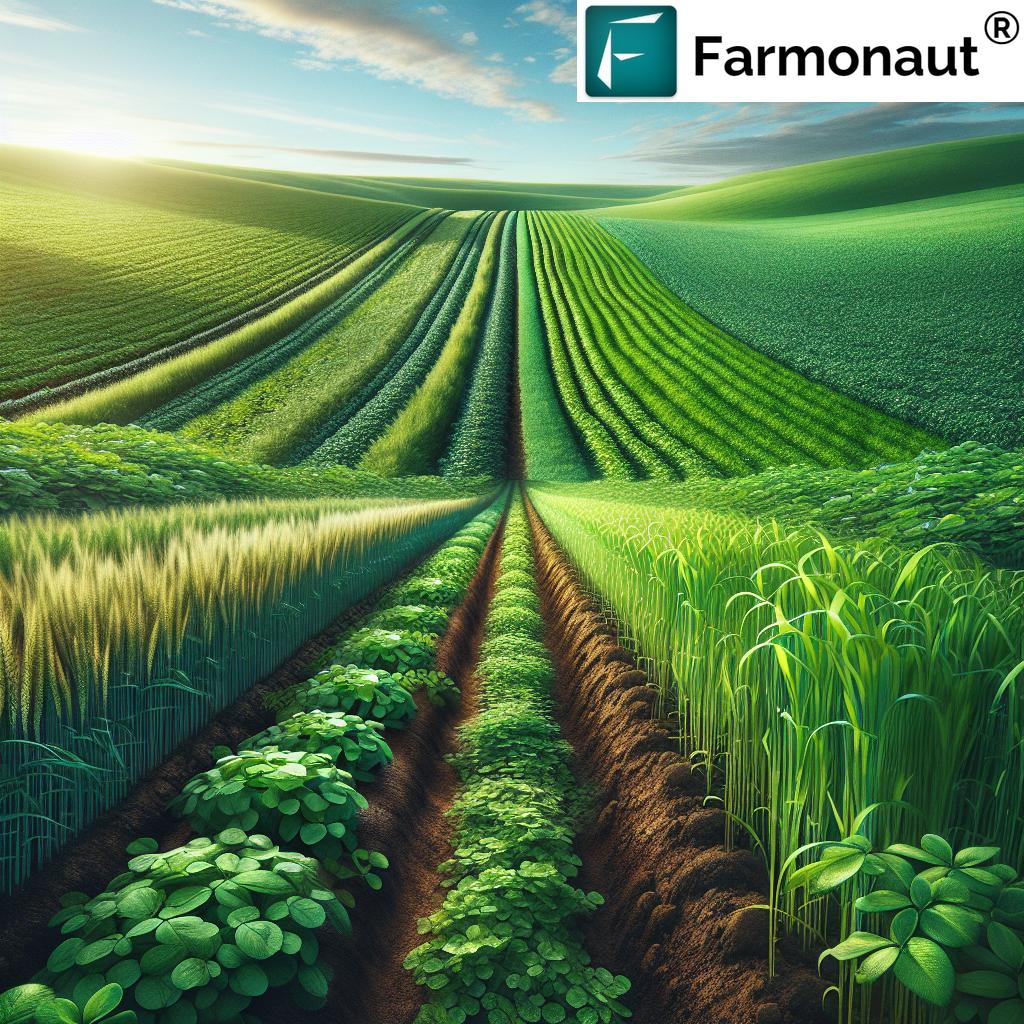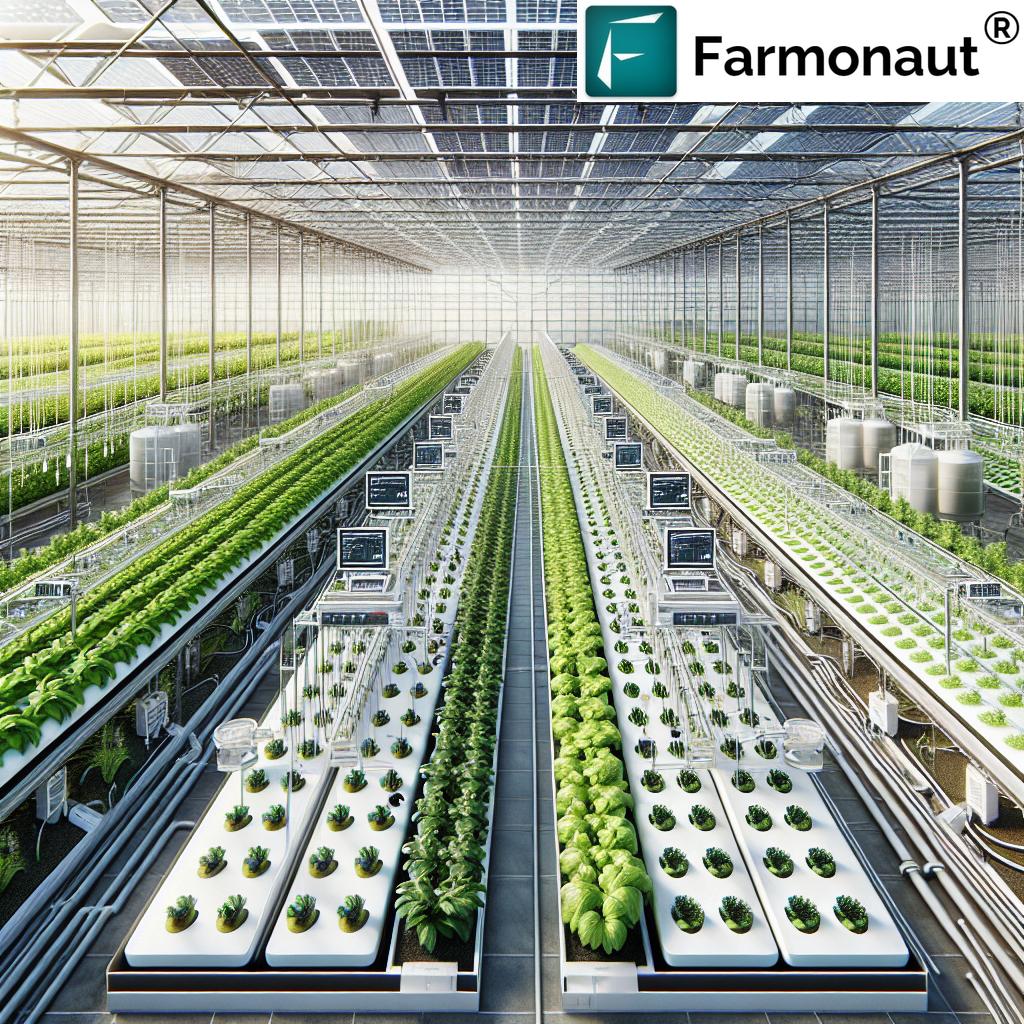Irrigation System Installation Cost Near Me: 2026 Guide
“Drip irrigation systems can reduce water usage by up to 50% compared to traditional methods, saving valuable resources in 2025.”
“Efficient irrigation installation boosts crop yields by nearly 30%, directly supporting sustainable agriculture practices for the 2026 season.”
- Summary: Efficient Irrigation System Installation
- Understanding Irrigation System Installation
- Factors Influencing Irrigation System Installation Cost
- Estimated Irrigation System Installation Cost Comparison Table: 2026
- Benefits of Modern Irrigation Installation
- Finding Irrigation System Installation Near Me in 2026
- Farmonaut Satellite Technology & Irrigation Management for Sustainable Agriculture
- Irrigation Installation Cost Savings Through Automation
- Government Subsidies & Financial Assistance Programs in 2026
- Choosing the Right Irrigation System for Your Farm
- Maintenance, Automation & Long-Term Investment
- Sustainability & Climate Resilience in Irrigation Practices
- Farmonaut Subscriptions and API Access
- Frequently Asked Questions – FAQs
- Conclusion: Irrigation System Installation in 2026 and Beyond
Summary: Efficient Irrigation System Installation—A Key to Sustainable Agriculture in 2025
As global climate patterns continue to change and water resources become increasingly scarce, the significance of efficient irrigation systems in agriculture cannot be overstated. In 2025 and heading towards 2026, modern irrigation system installation not only represents a technological upgrade but also a critical investment in sustainable farming practices.
These investments optimize water use, improve crop yields, and ensure long-term soil health. Efficient irrigation system installation allows farmers to adapt to climate change, utilize advanced technologies, and maximize return on investment—making it a cornerstone for sustainable agriculture in 2026 and beyond.
Understanding Irrigation System Installation
Irrigation system installation involves setting up infrastructure that delivers water directly to crops in a controlled and efficient manner. The primary goal is to ensure adequate water supply to plant roots, minimize wastage, and optimize agricultural productivity. The process commonly includes sourcing water, installing pipes, pumps, filtration units, and sometimes integrating advanced automation or remote management features.
Common Types of Irrigation Systems
- Drip Irrigation: Delivers water directly to the root zone of each plant, drastically reducing wastage. It is favored for orchards, vineyards, and high-value horticultural crops because of its precision and efficiency.
- Sprinkler Systems: These mimic natural rainfall by spraying water over large open fields, making them suitable for cereals and vegetables. Sprinkler systems are versatile and widely used globally.
- Surface Irrigation: In surface systems, water flows across the field using gravity. Still popular in areas where water supply is adequate and the topography lends itself well, despite being less efficient than modern alternatives.
Advantages and Suitability
- Drip irrigation is extremely efficient, widely recognized for reducing evaporation and runoff, and for its potential to save up to 50% water compared to older methods.
- Sprinkler systems are excellent for uniform coverage across diverse field types, while advanced sprinklers can be automated or controlled remotely, increasing labor efficiency.
- While surface irrigation is a traditional and simple approach for large fields, it is generally recommended only where labor and water are inexpensive and plentiful, as it may involve significant water wastage and non-uniformity of coverage.
Factors Influencing Irrigation System Installation Cost
Irrigation system installation cost can vary widely. To plan effectively, it’s crucial to understand what influences the overall installation cost for your farm or agricultural project.
Key Factors Affecting Irrigation Installation Cost
- Farm Size: Larger farms require more extensive piping, hardware, and labor, resulting in higher total costs (though cost per acre/hectare might reduce with scale).
- System Type: Drip systems are generally more expensive upfront, while sprinkler setups can be slightly less costly but may require more energy to operate.
- Automation Level: Automated systems (sensor-based, IoT-integrated) carry higher upfront costs but offer significant long-term savings in water and labor.
- Water Source and Terrain: The distance to water sources, elevation changes, and field topography affect the amount of piping, power for pumps, and special adaptations required.
- Quality of Equipment: Invest in durable materials to ensure long-term system health and minimize maintenance costs.
- Additional Expenses: Water pumps, filtration units, piping, labor, and maintenance must all be factored into installation cost.
Estimated costs for 2026:
- Drip irrigation system installation cost: $500–$2,000 per acre (even higher for advanced, automated systems)
- Sprinkler system installation: $400–$1,800 per acre
- Surface irrigation installation: $300–$1,200 per acre, though lower efficiency may lead to higher lifetime water and maintenance expenses
Estimated Irrigation System Installation Cost Comparison Table: 2026
Below, you’ll find a comprehensive table outlining estimated 2026 irrigation installation costs by system type, including sustainability and efficiency metrics. Use this table to compare expected outlays, water savings, yield improvements, and payback periods for “irrigation system installation cost near me”:
| Irrigation System Type | Estimated Installation Cost (per acre) | Average Water Savings (%) | Potential Crop Yield Improvement (%) | Estimated Payback Period (years) |
|---|---|---|---|---|
| Drip Irrigation | $500 – $2,000 | Up to 50% | 20–30% | 3–5 |
| Sprinkler System | $400 – $1,800 | 30–35% | 10–18% | 4–6 |
| Surface Irrigation | $300 – $1,200 | 10–20% | 5–10% | 5–8 |
| Automated/IoT-Integrated Drip | $1,200 – $2,500 | 55–60% | 25–35% | 2–3 |
Note: The installation costs above are estimates intended for 2026 and may vary depending on local market rates, farm size, customization, and hardware choices for “irrigation system installation near me.”
Benefits of Modern Irrigation Installation
“Why invest in modern irrigation installation?” Here’s why these systems are considered critical for sustainable agriculture and resilience in 2026:
- Water Efficiency and Conservation:
- Precision irrigation reduces water consumption by up to 50% versus flood methods, directly addressing the increasing scarcity of water resources in many regions.
- Efficient irrigation system installation helps preserve groundwater and surface water for future use.
- Enhanced Crop Yield and Quality:
- Consistent and adequate watering directly leads to higher yields and improved crop quality. Drip irrigation, in particular, increases yields by up to 30% in high-value crops.
- Labor Saving and Automation:
- Advanced automation (sensor- or IoT-based) minimizes manual labor, regulates irrigation timing, and offers responsive management based on weather and soil moisture data.
- Soil Health Preservation:
- Modern systems avoid waterlogging, soil compaction, and erosion by delivering water in a controlled, targeted manner. This preserves topsoil health and fertility—vital for sustained productivity.
- Climate Resilience:
- With climate patterns becoming increasingly unpredictable, efficient irrigation is key to buffer against droughts, dry spells, and erratic rainfall.
Finding Irrigation System Installation Near Me in 2026
Locating reliable, local service providers for irrigation installation near me is more accessible than ever in 2026. Here’s how to optimize your search and selection process:
- Online Platforms & Mobile Apps: Search for qualified irrigation contractors in your area, check ratings, customer reviews, and compare pricing directly via digital services.
- Agricultural Extension Services: Many local and regional agricultural agencies now maintain directories of trusted service providers, guiding farmers through design and installation options.
- Cooperative Societies: Collaborate with local farming cooperatives for bulk installation offers or shared experiences with specific systems, technologies, and brands.
- Local Agri-Dealers: Dealers often work with certified installers and offer both the equipment and the expertise for setup tailored to your region’s crops and climate.
This collaborative approach streamlines access to efficient irrigation solutions, ensuring that irrigation system installation cost near me is both competitive and aligned with local needs.
Farmonaut Satellite Technology & Irrigation Management for Sustainable Agriculture
At Farmonaut, we empower farmers and agri-managers with satellite-driven solutions for crop monitoring, soil health analysis, and water resource management. Our advanced platform leverages real-time satellite imagery and artificial intelligence to give users actionable insights that optimize irrigation practices, reduce costs, and improve yields.
- Satellite-Based Monitoring: Use our web and mobile apps to receive multispectral analyses of your fields—including carbon footprint data, blockchain-based traceability, and crop health metrics.
- AI-Driven Jeevn Advisory: Our Jeevn AI System delivers real-time weather forecasts, water stress alerts, and tailored irrigation schedules—empowering informed decisions that boost productivity and support large scale farm management.
- API Integration: Businesses and developers can seamlessly connect our API for advanced, affordable, and scalable AI-driven irrigation management insights.
Read our API developer documentation for integration use-cases.
Irrigation Installation Cost Savings Through Automation
Automated irrigation systems powered by IoT technologies and remote sensors revolutionize irrigation system installation cost calculations. While upfront investments are higher, they offer significant long-term reductions in:
- Water Expenses: Monitoring real-time field data ensures water is applied only when and where needed—cutting unnecessary consumption by more than 20% compared to traditional timers.
- Labor Costs: Automated systems eliminate most manual tasks—once set up, the system operates on its own, using field conditions and weather forecasts as triggers.
- Fertilizer & Nutrient Costs: Many advanced irrigation installations now include fertigation (fertilizer via water delivery), optimizing use and boosting plant uptake.
Integration with platforms like Farmonaut allows farms to further reduce energy and operating expenses by merging satellite-driven forecast data with on-the-ground automation for precise, data-backed irrigation scheduling.
Government Subsidies & Financial Assistance Programs in 2026
To encourage widespread adoption of sustainable irrigation, many governments and agricultural agencies in 2026 are offering:
- Direct Financial Subsidies: Cost-sharing and rebate programs based on type or scale of irrigation system installation.
- Low-Interest Loans: Financing irrigation installation at subsidized rates, reducing upfront barriers for small and medium-sized farmers.
- Technical Assistance and Training: Supporting capacity building, ensuring installed systems operate at peak efficiency and align with modern sustainable practices.
- Insurance Products: Some programs incentivize irrigation installation with reduced premiums for crop insurance—often validated using satellite verification tools such as those available with Farmonaut crop loan and insurance solutions.
Choosing the Right Irrigation System for Your Farm
Selecting the optimal irrigation system is a unique decision, influenced by the crop type, soil conditions, climate patterns, and water availability in your region:
- Drip irrigation installation is ideal for tree fruits, orchards, vineyards, and vegetable rows. It’s best when targeting maximum water savings, minimal weed growth, and highest yields per square meter.
- Sprinkler systems fit farms with larger acreage of cereals, pulses, or vegetables—especially where rainfall is inconsistent.
- Surface irrigation still serves best in areas with abundant water supply and where field leveling is feasible and affordable.
- Automated or IoT-integrated systems are increasingly popular among those seeking efficiency, monitoring, and future-ready solutions.
We at Farmonaut recommend using satellite and AI-based agricultural services for specific, up-to-date guidance tailored to your land’s conditions, crop plantation, and forest advisory.
Farmonaut Subscriptions and API Access
Whether you’re a farm owner, a local agricultural service provider, or a business, our Farmonaut subscription plans let you access powerful, scalable, and cost-effective satellite insights for real-time irrigation and crop management.
“Efficient irrigation installation boosts crop yields by nearly 30%, directly supporting sustainable agriculture practices for the 2026 season.”
Maintenance, Automation & Long-Term Investment
Proper installation is only the first step; ongoing maintenance ensures system longevity, efficiency, and value retention. Key practices include:
- Regular inspections for leaks, blockages, or signs of wear
- Seasonal system flushing & filter cleaning to avoid clogging and mineral buildup (especially in drip systems)
- Automation checks and updates to control software/fault monitoring systems
- Timely repairs or proactive replacements for damaged lines or worn-out emitters/sprinkler heads
While these add to ongoing costs, automated maintenance reminders and remote diagnostics (now standard in smart setups) help minimize emergency repairs. This extends the estimated payback period benefits, so your overall irrigation installation cost is genuinely an investment in future farm resilience and savings.
Sustainability & Climate Resilience in Irrigation Practices
Modern irrigation system installation lays the foundation for climate-resilient, sustainable farms by:
- Reducing water extraction from overtaxed sources and preserving regional water resources
- Minimizing the carbon footprint and environmental impacts (less pumping, lower fertilizer runoff)
- Supporting regenerative agriculture; healthier soils mean better long-term yields and ecosystem services
- Improving food security throughout 2025, 2026, and beyond via more reliable, higher-quality production cycles
Are you interested in quantifying your farm’s environmental impact? Farmonaut’s carbon footprinting technology can help track, benchmark, and optimize your progress towards net-zero agriculture.
Frequently Asked Questions – FAQs
What is the average cost of drip irrigation system installation in 2026?
Estimated costs for drip irrigation installation in 2026 range from $500 to $2,000 per acre. The actual price can vary based on system automation, equipment quality, and field size.
How can I find reliable irrigation installation providers near me?
Use online platforms, local agricultural extension offices, or farming cooperatives for recommendations on trusted, experienced service providers. Check reviews and compare service offerings before deciding.
Are there government subsidies for irrigation installation cost in 2026?
Many governments offer subsidies, technical guidance, and loans for sustainable irrigation system installation. Consult your local agricultural authorities for program details available in your region.
Do automated and IoT-based systems justify their higher upfront installation cost?
Yes. Automated systems reduce water, labor, and fertilizer expenses—often giving 2–3 year payback periods even on premium investments. Their sustainability and data-based management provide unmatched long-term value.
Why is irrigation system installation critical for climate resilience?
With climate change increasing unpredictability in rainfall, precise irrigation systems ensure steady production, reduce dependency on natural rainfall, and shield crops from drought risk.
How does Farmonaut support irrigation system installation?
We offer satellite-based resource management, AI advisory, traceability tools, and API integration to help farmers, agri-managers, and businesses monitor, manage, and optimize irrigation practices efficiently for sustainable agriculture.
Conclusion: Irrigation System Installation in 2026 and Beyond
As efficient irrigation system installation becomes a key pillar of sustainable agriculture, the costs of adopting modern systems are best seen as a long-term investment rather than mere expenditure. By evaluating up-front costs, ongoing maintenance, and potential returns—including higher yields, greater water efficiency, and climate adaptability—farmers and agri-businesses will continue to thrive in a resource-constrained, climate-challenged future.
Utilizing local services for irrigation installation near me, leveraging digital platforms for knowledge and comparisons, and adopting AI and satellite-driven insights from platforms like Farmonaut are all part of the path toward a resilient, productive, and sustainable farm enterprise.
Ready to take the next step in sustainable farm management? Discover Farmonaut’s suite of satellite and AI-based agricultural solutions—empowering smarter, data-driven irrigation decisions for 2026 and the future.
“Drip irrigation systems can reduce water usage by up to 50% compared to traditional methods, saving valuable resources in 2025.”











